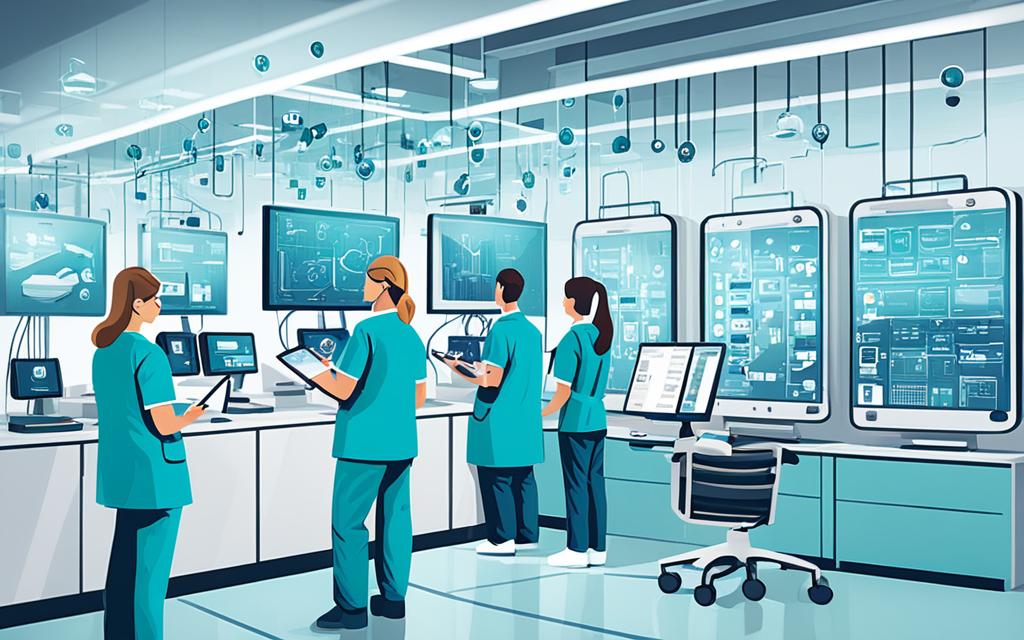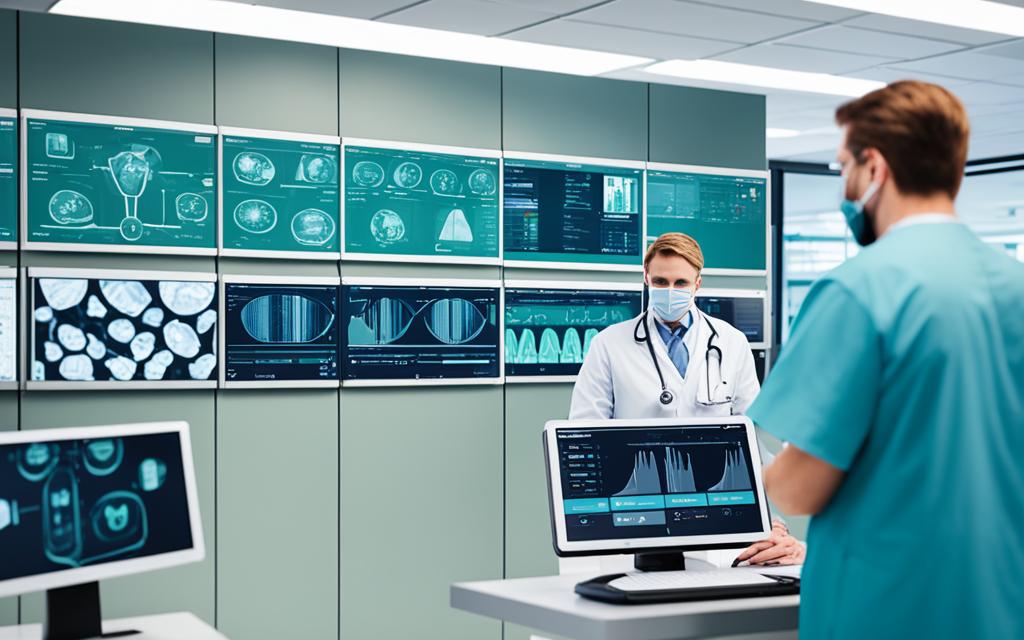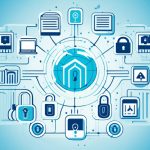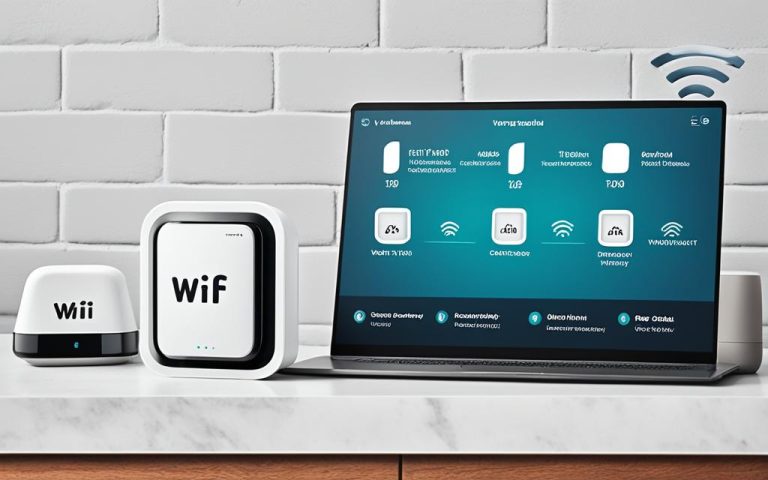Wireless Local Area Network (WLAN) technology plays a vital role in healthcare, going beyond providing internet access. WLAN serves as the backbone of various critical functions, enhancing patient care and streamlining operations.
Within healthcare settings, WLAN enables real-time transmission of patient data for electronic health records, remote monitoring, telemedicine, and patient engagement. It also facilitates asset tracking, staff communication, inventory management, and patient registration. WLAN ensures secure connectivity, protecting sensitive patient data and complying with HIPAA regulations.
Enhancing Patient Care with WLAN
Wireless Local Area Network (WLAN) technology has transformed patient care in modern healthcare settings. By leveraging WLAN, healthcare providers can harness its numerous benefits to improve patient outcomes and streamline healthcare processes.
Benefits of WLAN in Patient Care
The implementation of WLAN has paved the way for telemedicine, bringing healthcare services directly to patients’ homes. Through secure and reliable WLAN connections, patients can now receive medical consultations remotely, reducing the strain on physical healthcare facilities. This not only increases convenience for patients but also allows healthcare providers to reach a wider patient population.
Real-time patient monitoring is another vital aspect of WLAN in patient care. Through WLAN-enabled devices, healthcare professionals can monitor patients’ vital signs, record and analyze data, and intervene promptly when necessary. By providing immediate access to patient information, WLAN enables quick decision-making, ensuring better patient care and safety.
Furthermore, WLAN facilitates remote access to medical images and diagnostic data. This feature greatly expedites consultations and collaborative diagnostics, as healthcare providers can instantly access patient records and images from anywhere within the network. This seamless exchange of information enables efficient and timely decision-making, improving diagnoses and treatment plans.
WLAN for Telemedicine
Telemedicine, made possible by WLAN technology, has revolutionized the way healthcare is delivered. It allows patients to connect with healthcare professionals without the need for in-person visits. The advantages of telemedicine are twofold – it reduces the burden on healthcare facilities and offers convenience and accessibility to patients. This innovative approach to healthcare enables remote consultations, diagnosis, and treatment, benefiting individuals who may have limited mobility, reside in remote areas, or require frequent follow-ups.
WLAN-powered telemedicine expands access to quality healthcare for underserved communities, enhances patient convenience, and optimizes healthcare resources.
By empowering patients to actively engage in their healthcare, WLAN contributes to patient-centered care models. Patients can access their medical records, test results, and other healthcare information through patient portals and mobile applications. This accessibility fosters collaboration between patients and healthcare providers, enabling informed decision-making, self-management, and shared responsibility in healthcare management.
| Benefits of WLAN in Patient Care: |
|---|
| Enables telemedicine, reducing the burden on physical healthcare facilities |
| Facilitates real-time patient monitoring for quick decision-making |
| Enables remote access to medical images and diagnostic data for efficient consultations |
| Empowers patients through access to patient portals and mobile apps |
By harnessing the power of WLAN, healthcare providers are transforming patient care, making it more accessible, efficient, and patient-centric. Remote consultations, real-time monitoring, and collaborative diagnostics facilitated by WLAN are revolutionizing healthcare delivery and improving patient outcomes.
Streamlining Operations with WLAN
WLAN (Wireless Local Area Network) plays a fundamental role in healthcare facilities, enabling the streamlining of critical operations. It enhances efficiency in inventory management, patient registration, and staff coordination, resulting in improved workflow and operational performance.
One of the primary advantages of WLAN in healthcare settings is its ability to bridge various medical devices. This allows for real-time monitoring, alarm notifications, and data sharing, which are essential for maintaining patient safety and reducing response times. With WLAN, healthcare professionals can stay connected to vital medical information and respond promptly to any changes in patient condition.
Additionally, WLAN has proven to be invaluable in administrative tasks such as billing, scheduling, and inventory management. By providing secure and reliable connectivity, it ensures that critical data is readily accessible, contributing to overall operational efficiency. WLAN facilitates seamless communication between healthcare staff and enables swift access to essential resources, promoting collaborative decision-making.
“WLAN enhances workflow and operational efficiency in healthcare settings by enabling real-time monitoring, alarm notifications, and data sharing.”
Moreover, WLAN’s role in inventory management cannot be overstated. It allows healthcare facilities to track and manage inventory effectively, ensuring that necessary supplies are readily available when needed. This real-time visibility eliminates manual processes and minimizes the risk of shortages or excess inventory, optimizing resource allocation and reducing costs.
To illustrate the impact of WLAN on inventory management, consider the following up-to-date table showcasing the benefits of implementing WLAN in healthcare facilities:
| Benefits of WLAN in Inventory Management |
|---|
| Real-time visibility and tracking of inventory |
| Reduced manual processes for inventory management |
| Optimized resource allocation and reduced costs |
| Minimized risk of shortages or excess inventory |
Implementing WLAN in healthcare facilities streamlines operations, promotes efficient inventory management, and enhances overall workflow. By providing secure connectivity and bridging various devices, WLAN empowers healthcare professionals to deliver high-quality care while optimizing resources and costs.
Secure WLAN in Healthcare
In healthcare settings, the security of WLAN (Wireless Local Area Network) is of utmost importance. With patient data being transmitted over these networks, safeguarding against data breaches and cyber threats is essential to protect sensitive and confidential information. Adhering to HIPAA (Health Insurance Portability and Accountability Act) regulations is crucial for maintaining a secure WLAN environment.
To ensure WLAN security in healthcare, healthcare facilities must implement robust security measures such as encryption and access controls. These measures help protect patient data during transmission and restrict unauthorized access. Regular security audits are necessary to identify vulnerabilities and address potential risks proactively. Network segmentation, which divides the network into different segments or zones, helps contain breaches and limit data exposure.
“Implementing encryption and access controls are essential WLAN security measures in healthcare settings.”
Intrusion detection and prevention systems play a vital role in WLAN security by actively monitoring the network for any unauthorized activity. These systems detect and prevent potential threats in real-time, providing an additional layer of security. Regular updates and patch management for network equipment and software are also crucial for ensuring the security of WLAN networks.
“The secure transmission of patient data over WLAN networks plays a critical role in maintaining patient privacy and complying with HIPAA regulations.”
The Importance of Education and Training:
Healthcare staff should receive education and training on security best practices to mitigate risks associated with WLAN networks. Understanding the importance of data security and being knowledgeable about potential threats helps create a culture of vigilance within healthcare facilities. Staff members should be trained on safe practices such as strong password management, recognizing phishing attacks, and reporting any suspicious activity.
Implementing HIPAA Compliance for WLAN:
Complying with HIPAA regulations is a fundamental requirement for WLAN security in healthcare settings. HIPAA provides guidelines and standards for protecting and securing patient health information. By implementing encryption, access controls, and regular security audits, healthcare facilities ensure that they meet the necessary standards for HIPAA compliance.

Best Practices for Healthcare WLAN Security
In today’s healthcare settings, WLAN (Wireless Local Area Network) plays a vital role in enhancing patient care and streamlining operations. However, with the increasing importance and reliance on WLAN, it is crucial to implement robust security measures to protect sensitive patient data and ensure compliance with HIPAA regulations. In this section, we will discuss the best practices for healthcare WLAN security, including secure WLAN implementation, regular security audits, and ongoing staff education and training.
Implement Strong Access Controls and Encryption
One of the fundamental steps in securing a healthcare WLAN is to implement strong access controls and encryption. Access controls ensure that only authorized individuals can connect and access the network, while encryption protects data during transmission. By implementing strong access controls and encryption protocols, healthcare facilities can mitigate the risk of unauthorized access and data breaches.
Secure WLAN implementation can involve various measures, including:
- Using a strong password policy for network access
- Enabling multi-factor authentication for network logins
- Implementing WPA2-Enterprise or more advanced encryption protocols
- Regularly updating encryption keys and passwords
Network Segmentation and Intrusion Detection
Another important aspect of healthcare WLAN security is network segmentation and intrusion detection. Network segmentation involves separating the WLAN into different logical networks, allowing for better control and isolation of different types of devices and data. By implementing network segmentation, healthcare facilities can contain security breaches and limit unauthorized access.
Intrusion detection and prevention systems play a crucial role in monitoring network traffic and identifying potential security threats in real-time. These systems use advanced algorithms and patterns to detect anomalies and suspicious activities, allowing for timely response and mitigation of security risks.
Regular Security Audits and Updates
To maintain a secure WLAN environment in healthcare settings, regular security audits and updates are essential. Security audits help identify vulnerabilities and weaknesses in the WLAN infrastructure, allowing for proactive measures to strengthen security. In addition, regular updates to network equipment and software ensure that the latest security patches are applied, minimizing the risk of exploits.
During security audits, healthcare facilities should assess the effectiveness of their security measures, including:
- Verifying the strength of access controls and encryption
- Reviewing network segmentation and intrusion detection systems
- Testing the effectiveness of security policies and procedures
- Conducting vulnerability assessments
Ongoing Education and Training
Security best practices are only effective if healthcare staff are aware of and adhere to them. Ongoing education and training programs play a crucial role in ensuring that staff members understand the importance of WLAN security and are equipped with the knowledge to follow best practices. These programs should cover topics such as password hygiene, identifying phishing attempts, and reporting suspicious activities.
By investing in ongoing education and training, healthcare facilities can create a culture of security awareness and empower staff to actively contribute to WLAN security.
Following these best practices for healthcare WLAN security is paramount to protect patient data, maintain regulatory compliance, and ensure the integrity of critical healthcare operations. Secure WLAN implementation, regular security audits, and ongoing staff education and training will help healthcare facilities establish a robust and resilient WLAN security framework.
| Best Practices for Healthcare WLAN Security |
|---|
| Implement strong access controls and encryption |
| Ensure network segmentation and intrusion detection |
| Conduct regular security audits and updates |
| Provide ongoing education and training |
Designing a Robust WLAN Network for Healthcare Facilities
When it comes to designing a WLAN network for healthcare facilities, there are several crucial factors that need to be taken into consideration. In order to ensure optimal performance, network availability, and data security, healthcare organizations must follow WLAN design best practices that align with the scalability requirements of the healthcare industry.
Network Performance
Network performance plays a crucial role in healthcare settings, where real-time applications such as telemedicine and remote patient monitoring are utilized. To support these applications, the WLAN network must have sufficient bandwidth and minimal latency. This ensures that healthcare professionals can access patient data in real-time and make informed decisions promptly. Consistently monitoring network performance and conducting regular performance assessments are essential to identify and address any potential bottlenecks.
Redundancy and Network Availability
Considering the critical nature of healthcare services, network availability is of utmost importance. Redundancy measures should be implemented to minimize downtime and ensure continuous connectivity. This can be achieved through the deployment of redundant access points, routers, and switches, as well as the use of failover mechanisms. By designing a WLAN network with built-in redundancy, healthcare facilities can mitigate the risk of network outages and ensure uninterrupted access to critical patient data.
Patient Isolation and Data Security
Data security is a top priority in healthcare environments, given the sensitive nature of patient information. Patient isolation is a key consideration in WLAN design, as it ensures that patient data is securely transmitted and protected from unauthorized access. Implementing network segmentation and access control measures ensures that patient data remains separate and secure within the WLAN network. Healthcare organizations must also adhere to industry regulations, such as the Health Insurance Portability and Accountability Act (HIPAA), to ensure compliance and protect patient confidentiality.
Scalability and Guest Network
The healthcare industry is experiencing a rapid increase in the number of connected devices, including medical devices, wearables, and IoT-enabled equipment. Designing a WLAN network with scalability in mind is essential to accommodate the growing number of devices and ensure seamless connectivity. Additionally, implementing a separate guest network for visitors and non-essential devices helps prevent unauthorized access to sensitive healthcare data. This segregation of networks adds an extra layer of security and helps maintain network performance.
Security Audits and Vulnerability Assessments
Ongoing security audits and vulnerability assessments are crucial to identify and address potential risks and vulnerabilities in a WLAN network. Regular review of security measures, such as encryption protocols, firewall configurations, and user access controls, helps maintain a secure WLAN environment. By conducting periodic security audits, healthcare organizations can stay proactive in mitigating security threats and ensuring the protection of patient data.
Designing a robust WLAN network for healthcare facilities requires careful planning, considering performance, redundancy, patient isolation, scalability, and network security. By following WLAN design best practices, healthcare organizations can create a reliable and secure network infrastructure that supports the diverse needs of modern healthcare settings.
| Key Factors for Designing a WLAN Network in Healthcare Facilities | Considerations |
|---|---|
| Network Performance | Sufficient bandwidth and minimal latency for real-time applications |
| Redundancy and Network Availability | Deployment of redundant access points, routers, and switches |
| Patient Isolation and Data Security | Network segmentation and access control measures to protect patient data |
| Scalability and Guest Network | Accommodation of increasing number of connected devices and separate network for guests |
| Security Audits and Vulnerability Assessments | Ongoing review of security measures to identify and address potential risks |
Conclusion
By revolutionizing patient care and streamlining operations, WLAN (Wireless Local Area Network) has become an essential component of modern healthcare settings. The importance of WLAN in healthcare cannot be overstated, as it empowers both patients and healthcare professionals in delivering efficient and effective healthcare services.
Through telemedicine, remote monitoring, and patient engagement, WLAN enables patients to receive medical consultations from the comfort of their homes. Real-time patient data transmission ensures prompt decision-making by healthcare professionals, leading to improved patient outcomes. WLAN also facilitates access to medical images and diagnostic data, enabling collaborative diagnostics and quicker consultations.
Ensuring the security of WLAN networks is crucial to protect sensitive patient data and comply with HIPAA regulations. Robust security measures, including encryption, access controls, and regular audits, must be implemented by healthcare facilities. Furthermore, careful planning and design are necessary to create a reliable and scalable WLAN network that can accommodate the increasing number of connected devices.
As technology continues to advance, the future of WLAN in healthcare looks promising. WLAN will continue to play a vital role in enhancing patient care and streamlining operations. It will empower healthcare professionals with real-time data, improve patient engagement, and support the delivery of efficient healthcare services. With the ongoing emphasis on digitalization in the healthcare industry, WLAN is set to remain an integral part of the patient care ecosystem.
FAQ
What is the role of WLAN in healthcare settings?
WLAN plays a critical role in modern healthcare settings by enhancing patient care and streamlining operations.
How does WLAN enhance patient care?
WLAN enhances patient care by enabling telemedicine, remote monitoring, and access to patient portals and mobile apps.
How does WLAN streamline operations in healthcare facilities?
WLAN streamlines operations in healthcare facilities by enabling efficient inventory management, patient registration, and staff coordination.
Why is security important in healthcare WLAN networks?
Security is important in healthcare WLAN networks to protect sensitive patient data and comply with HIPAA regulations.
What are the best practices for healthcare WLAN security?
Best practices for healthcare WLAN security include implementing strong access controls, encryption, and network segmentation, conducting regular security audits, and providing ongoing education and training for staff.
How should a robust WLAN network be designed for healthcare facilities?
A robust WLAN network for healthcare facilities should be designed considering factors such as performance, redundancy, patient isolation, scalability, and a separate guest network.



















